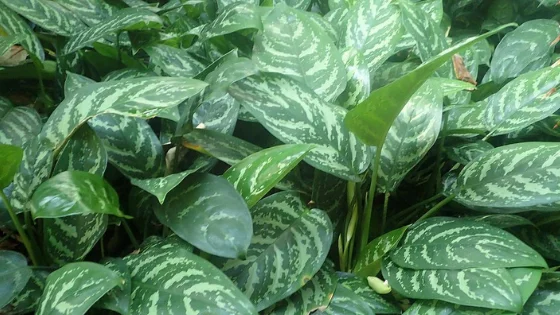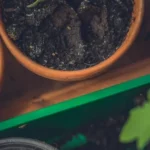Philippine Evergreen is a hardy plant. Therefore, the plant can withstand a lot of neglect and abuse. This plant will do well when placed in a room that has a medium amount of light.
It is a good idea to rotate the plant occasionally to ensure a good amount of light. These plants will grow to between one and two feet in height with a width of between one and two feet.
Philippine evergreen plants are native to Asia and therefore prefer a humid environment.
These plants were first discovered in Asia during the nineteenth century. Philippine evergreen plants have an attractive sturdy and wide green leaves and they can make a very attractive feature in a home.
Table of Contents
What Does Your Philippine Evergreen Require?
Light Requirements
The Philippine Evergreen plant does best in areas that have a low to medium amount of light.
This plant can cope with fluorescent light. Avoid putting the plant in direct sunlight as it will be to bright and will damage and burn the leaves.
Although this plant can grow in low light conditions, it will not grow when placed in a dark room.
This plant can grow well in rooms that are lit by artificial light, which makes them great for small spaces and offices. These plants will also do well when placed in north facing windows.
Temperature Requirements
Philippine Evergreen plants are best kept in temperatures around fifteen degrees centigrade. This plant is best kept away from air conditioning, heating vents and cold drafts. The Philippine Evergreen is very sensitive to cold temperatures.
Soil Requirements
The Philippine Evergreen plant is not picky when it comes to the soil that it is kept in. the plant will do best in soil that is well drained and slightly acidic. If the soil is retaining too much water, then it can help to mix some perlite or sand with the soil to increase drainage.
The Philippine Evergreen should be placed in a pot which has a good level of drainage. Organic soil is the best option for this plant as it will protect the roots of the plant.
Humidity Requirements
Philippine Evergreen plants prefer a high level of humidity. If the plant develops brown tips on the leaves, then the air is too dry. It is possible to increase the level of humidity using a humidifier or a tray filled with water and pebbles.
These plants are hardy forgiving plants. However, they really do need a high level of humidity. Although these plants like a humid environment, it is not necessary to recreate a tropical environment.
One way to increase humidity levels is to give the plant a shower from time to time, as this will help to keep the plant moist whilst all removing debris and dust.
How to Water Philippine Evergreen?
Philippine Evergreen plants can cope with less water than other household plants, but they will still need water to survive. These plants should be watered when the top two inches of soil is dry.
Give the plant a moderate amount of water and water slowly from above so that the water can soak through to the roots.
Tip out the excess water. Reduce the amount of watering that the plant gets over the autumn and winter months. Occasionally, clean the leaves using a damp soft cloth.
These are hardy plants and will be able to survive when they are not watered for a couple of weeks. Avoid letting the soil become water logged as these plants won’t do well when they become too wet.
How to Fertilise Philippine Evergreen
This plant does not require a lot of fertiliser, but it will need to be fed occasionally. It is best to use a liquid fertiliser, a slow releasing fertiliser or an emulsion fertiliser that is seaweed/fish based.
It is best to feed the plant once or twice during the main growing season, which is from spring to autumn. Although these plants do not need much in terms of fertiliser, avoid underfeeding them.
Extra Tips for Philippine Evergreen
Pests and Diseases
These plants are not very susceptible to diseases and pests, but they can occasionally be affected by common household diseases and pests such as mealybugs, scale, and spider mites.
The best way to deal with these problems is to use neem oil and insecticide. In most cases, the Philippine evergreen plants are affected by diseases or pests because of overwatering, which costs fungal problems and root rot.
Pruning
When the Philippine evergreen is beginning to look leggy and thin, it’s a good idea to prune the stems back and it is best to do this close to the soil. These plants will branch out at the base of the stem and grow along the length of the stem.
Pruning can be completed one stem at a time of all stems can be pruned back at the same time. It is best to prune these plants during early spring as this will allow the plant to develop healthy growth.
Philippine Evergreen Flowering
Older Philippine evergreen plants can produce flowers which look like peace lilies. These flowers usually occur during the spring and summer. The blooms of these plants are often cut from the plant before seed is produced.
Repotting Philippine Evergreens
When the Philippine evergreen is correctly looked after, it can live for up to eight years. The plant is best re-potted every two years as this will give the roots enough space to grow and develop. Caring for Philippine evergreen is very easy.
- Gently remove the plant by turning the pot sideways and holding the stems. Tap the bottom of the pot until the plants slide out from the pot.
- Loosen the soil that is compacted and spread the roots out gently.
- If the planter that you are using has a shortage of drainage holes, place a layer of soil or rocks at the bottom. Put potting mix into the planter and push it down.
- Place the plant in the planter and add more potting mix at the sides and the top and secure and centre the plant. Compact the soil by pushing it down.
- Water the plant lightly and sit in the desired location.
Propagation
Philippine evergreen plants can be propagated through either stem cuttings or division. The easiest way to propagate is from stem cuttings and this is a task best done during the summer when the temperatures are warmest.
Although these plants can be propagated, they are not often propagated by home growers.
- Choose a stem on the adult plant and the stem should be a couple of inches in length.
- Plant the stem in the new pot with the cut side down. It is best to treat the soil with a rooting hormone as this will encourage growth.
- The soil should be kept moist and this will encourage the roots to develop and this should take about four weeks.
FAQ
How Do You Care for Philippine Evergreens?
Philippine Evergreens should not be exposed to direct sunlight. These plants should be kept well drained and they should be potted in soil that is slightly acidic. These plants should be watered regularly throughout the Spring and Summer months.
During the warmer months, Philippine Evergreens need to be sprayed with mist. Reduce the amount of watering during the winter months. However, do not allow the plant to dry out completely.
Is Chinese Evergreen Poisonous to Humans
Chinese evergreen plants are dangerous when ingested by humans or if the juice of the plant encounters the skin. Symptoms of poisoning from one of these plants is a rash which can be painful and mucous membranes can become irritated.
What are Unhealthy Signs in Philippine Evergreens?
There are a couple of signs that these plants are unhealthy, and these are withered and brown leaves, which is a sign of underwatering.
How Often Should You Water Philippine Evergreens?
Philippine evergreen is an easy to care for plant that you can water on a regular basis. It’s best to keep the soil moist. This plant will also be able to survive when watered every two weeks.
Are Philippine Evergreens Toxic for Pets
Philippines evergreen plants are toxic for cats, dogs, and horses. Therefore, best to avoid having these plants near animals. These plants are very toxic when consumed by cats and dogs.
How to Deal with Brown Leaves on Philippine Evergreen Plants?
When the plant develops brown leaves near the bottom of the plant, wait until it can be pulled out by hand before removing them. Leaving the leaves until thy can easily be removed will prevent critters from invading the plant.
What are the Benefits of Philippine Evergreen Plants?
The main benefit of Philippine evergreen plant is that it is very easy to look after. This is a hardy plant which is very forgiving if it is not always given the best in terms of care.
Philippine evergreen does not require a lot of care, as it only needs watered about every two weeks and only needs to be fed fertiliser a couple of times a year.
Whilst the plant is very easy to look after, it is very decorative and makes popular indoor plant for commercial areas and offices.
Krzysztof Ziarnek, Kenraiz, CC BY-SA 4.0 https://creativecommons.org/licenses/by-sa/4.0, via Wikimedia Commons


